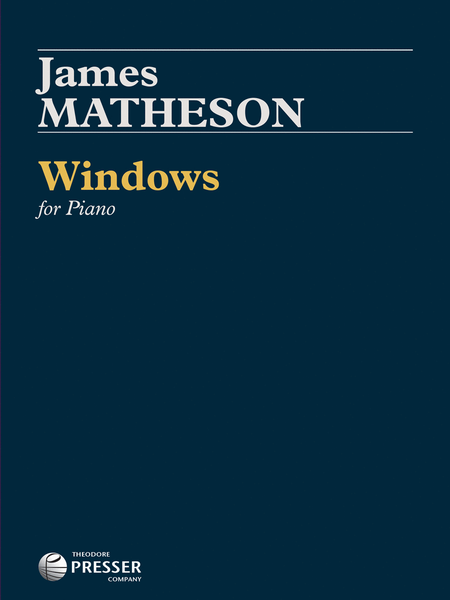Details
Description
SKU: PR.110418140
Composed by James Matheson. Performance Score. 24 pages. Duration 25 minutes. Theodore Presser Company #110-41814. Published by Theodore Presser Company (PR.110418140).ISBN 9781491129432. UPC: 680160640379.
Matheson’s five-movement work is a setting of stained glass windows created by Marc Chagall and Henri Matisse for a rustic country church adjoining the Rockefeller estate near Sleepy Hollow on the Hudson River. Matheson’s suite draws from four Chagall windows: 1. Jeremiah, 2. Isaiah, 3. Crucifixion, 4. The Good Samaritan, and culminates with Matisse’s 5. The Rose.
In 1954, the Rockefeller family asked Henri Matisse to create a stained glass Rose Window for the Union Church of Pocantico Hills, New York as a memorial to Abby Aldrich Rockefeller, the great art patroness and a founder of the Museum of Modern Art. It was to be the artist’s last work. A few years later, Mrs. Rockefeller’s youngest son, David, acting on behalf of the family, commissioned Marc Chagall to create an entire series of stained glass windows to fill the rest of the small church resulting in the large, majestic “Good Samaritan” window and eight sublime smaller windows, each depicting a biblical figure or scene. In 2015, Premiere Commission commissioned James Matheson to compose WINDOWS to celebrate the centennial of the Union Church of Pocantico Hills and the 100th birthday of David Rockefeller. This deeply touching, epic cycle distills into music the intimate, often heart-rending, visions of Chagall as well as the powerful simplicity of Matisse’s modern design which utilizes the striking collage forms he employed in his final years. Matheson’s work also reflects the influence of Olivier Messiaen’s own theologically-inspired music. Like the French master, Matheson utilizes large-scale blocks of harmonies with organ-like sonorities to support and shift the music’s kaleidoscopic planes of color and set into relief the work’s piercing motifs and intricate patterns. The universal themes of love and sacrifice (“Jeremiah” and “Isaiah”), loss and altruism (“Crucifixion” and “The Good Samaritan”) and the jubilant celebration of life and nature (“The Rose”) are memorably portrayed in this poignant tribute to the human spirit.—Bruce Levingston.

 Share
Share